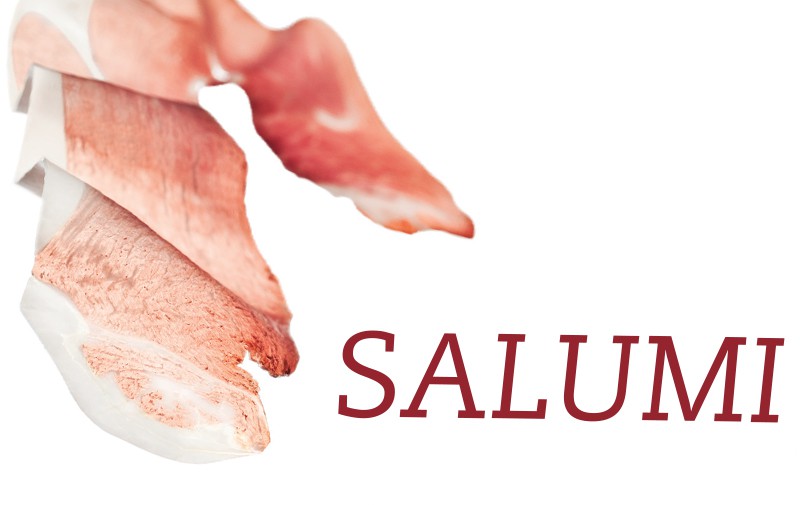
The national appetite for handcrafted, small-batch food and drink has been growing for more than three decades, thanks in part to the revival of heritage foods. Now domestic charcuterie—which includes luxury cold cuts, sausage, bacon, terrines, and pâtés—is the new savory star.
Pioneer salumieres Herb and Kathy Eckhouse, who founded La Quercia in Norwalk, Iowa, in 2001, are part of the renaissance. An impressive roster of high-profile chefs use their silky-textured prosciutto and speck instead of European brands. Herb likens the demand to trends in the cheese world. “The idea that it’s necessary to import cheese to get extraordinary, high-quality products has become obsolete, thanks to artisan producers around the country,” he says. “We’re at the start of a similar change in curing.”
The preservation processes for meat and cheese, as expressed by this new wave of practitioners, also have much in common. Both rely on traditional, labor-intensive techniques and raw ingredients tied to particular places and livestock. “Whether you’re working with milk or pig parts, much depends on how the animals are cared for and what they’re fed,” Herb notes.
Scott Buer is reviving the art of slow, dry curing at Bolzano Artisan Meats in Milwaukee. He starts with hog cheeks, bellies, and legs from heirloom pastured breeds and allows a natural, albeit controlled, alchemy to take over. “It’s an aging method that basically mirrors what happens with cheese. The base flavor comes from what the farmer does. Over time, natural microbial and chemical reactions generate a distinctive funky and earthy complexity.” This shared umaminess—or fullness on the palate—is one reason the two foods have such an affinity for each other.
Mold plays an essential role as meats and cheese mature and ripen. The fermentation cellars at Fra’ Mani Handcrafted Salumi in Berkeley, California, like cheese caves, encourage the growth of beneficial molds. “They consume moisture on the surface,” explains acclaimed chef-turned-cure-master Paul Bertolli. “This is a necessary step in the full development of flavors and aromas.”
It’s a rule of thumb that wines and foods with shared terroir make for complementary pairings. The principle holds true for cured meats and cheeses, too. Justin Severino, executive chef/partner at Elements, a new restaurant in Pittsburgh, chooses products from local cheesemakers that reflect the same geographic and regional styles as the charcuterie he’s doing in-house. “We source all our meat locally and some of our cheeses,” says Severino, “with the remainder coming from American artisanal producers.” His Italian Tasting Board features lardo, guanciale, and a northern Italian country pâté with Ewes Dream, a Pecorino Romano–type cheese from Otterbein Acres in Newburg, Pennsylvania. To bring out the best in both, he adds peach mostarda and marinated chickpeas.
At Husk, a recently opened restaurant in Charleston, South Carolina, Executive Chef Sean Brock focuses on sourcing Southern meats and cheese as a way “to tell a story about this part of the country.” He buys country hams (a.k.a. domestic prosciutto) from Caw Caw Creek (South Carolina), Newsom’s (Kentucky), and Benton’s (Tennessee). Regional cheeses in his larder that pair with these meats include fresh chèvre from Giddy Goat Cheese (South Carolina); nutty, alpine-style Mountaineer from Meadowcreek Dairy (Virginia); and tangy, rich Asher Blue from Sweet Grass Dairy (Georgia). “These meats and cheeses taste very good together,” Brock declares.
Cristiano Creminelli, the founder of Creminelli Fine Meats in Salt Lake City, Utah, comes from a family that has been practicing the curer’s art in Italy for centuries. There, each region produces its own distinctive salami and cheeses. “In Piemonte, where I am from,” he says, “we make a salame with our Barolo wine and Toma, an aged cow milk cheese. Eat them together with a piece of bread and a glass of that wine—you don’t need anything else.” Nor do you have to cook anything. A meal of charcuterie and cheese with fresh crusty bread and a favorite beverage just might be the best, easiest fast food ever.
this with that
- Bolzano pancetta + Saxon Homestead Creamery’s Green Fields, a washed-rind cow’s milk cheese, or Crave Brothers’ soft-ripened Petit Frère
- Bolzano speck prosciutto +
- Creminelli Salame al Tartuffo (truffle salami) + fresh, spreadable chèvre
- Creminelli Wild Boar Salame + soft, sweet Gorgonzola dolce
- Fra’ Mani Salame Nostrano + a chunk of Bertozzi’s young Parmigiano-Reggiano with fig marmalade
- La Quercia speck + Milton Creamery Prairie Breeze, a nutty cheddar-style cheese




